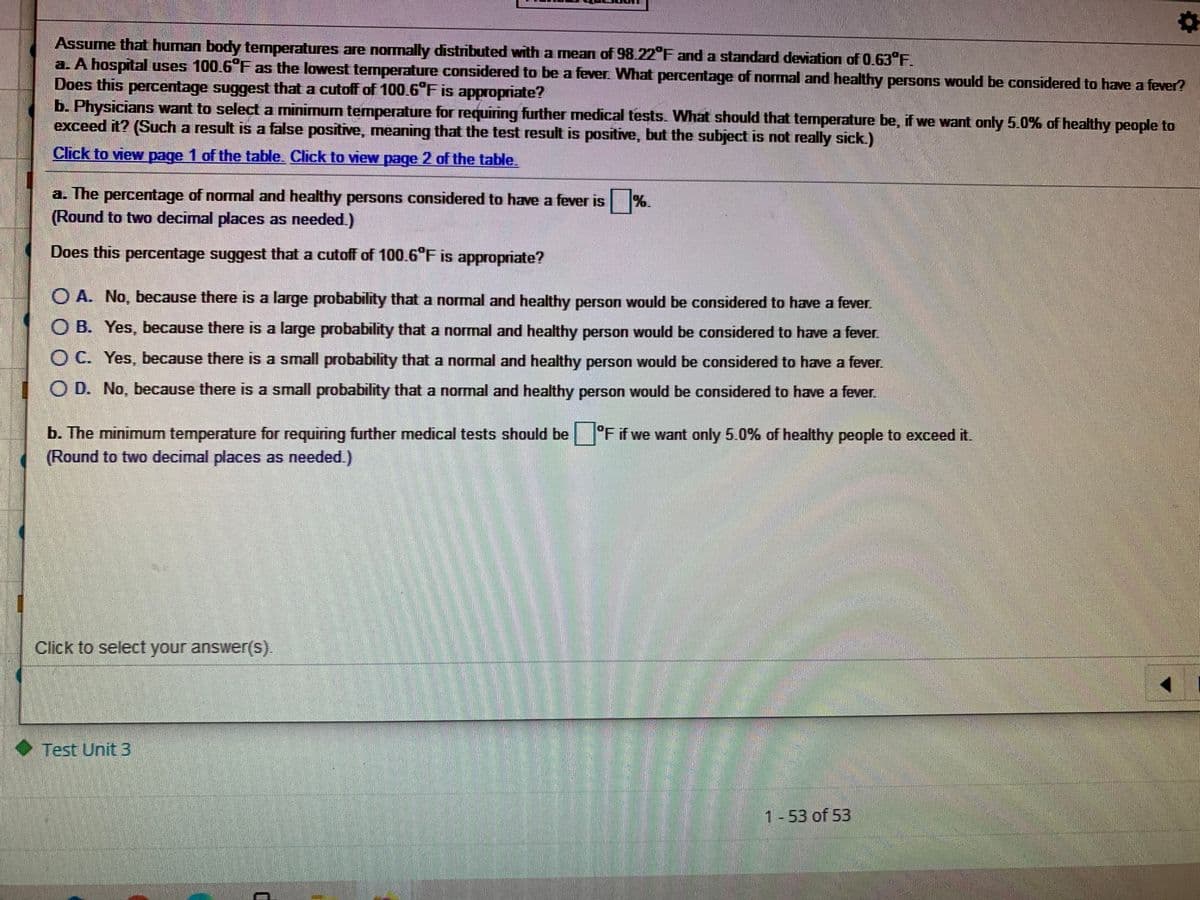Assume that human body temperatures are normally distributed with a mean of 98.22°F and a standard deviation of 0.63°F. a. A hospital uses 100.6°F as the lowest temperature considered to be a fever. What percentage of normal and healthy persons would be considered to have a fever? Does this percentage suggest that a cutoff of 100.6°F is appropriate? b. Physicians want to select a minimum temperature for requiring further medical tests. What should that temperature be, if we want only 5.0% of healthy people to exceed it? (Such a result is a false positive, meaning that the test result is positive, but the subject is not really sick.) Click to view page 1 of the table. Click to view page 2 of the table. a. The percentage of normal and healthy persons considered to have a fever is %. (Round to two decimal places as needed.) Does this percentage suggest that a cutoff of 100.6°F is appropriate? O A. No, because there is a large probability that a normal and healthy person would be considered to have a fever. O B. Yes, because there is a large probability that a normal and healthy person would be considered to have a fever. O C. Yes, because there is a small probability that a normal and healthy person would be considered to have a fever. O D. No, because there is a small probability that a normal and healthy person would be considered to have a fever. b. The minimum temperature for requiring further medical tests should be°F if we want only 5.0% of healthy people to exceed it. (Round to two decimal places as needed.)
Inverse Normal Distribution
The method used for finding the corresponding z-critical value in a normal distribution using the known probability is said to be an inverse normal distribution. The inverse normal distribution is a continuous probability distribution with a family of two parameters.
Mean, Median, Mode
It is a descriptive summary of a data set. It can be defined by using some of the measures. The central tendencies do not provide information regarding individual data from the dataset. However, they give a summary of the data set. The central tendency or measure of central tendency is a central or typical value for a probability distribution.
Z-Scores
A z-score is a unit of measurement used in statistics to describe the position of a raw score in terms of its distance from the mean, measured with reference to standard deviation from the mean. Z-scores are useful in statistics because they allow comparison between two scores that belong to different normal distributions.

Trending now
This is a popular solution!
Step by step
Solved in 2 steps


